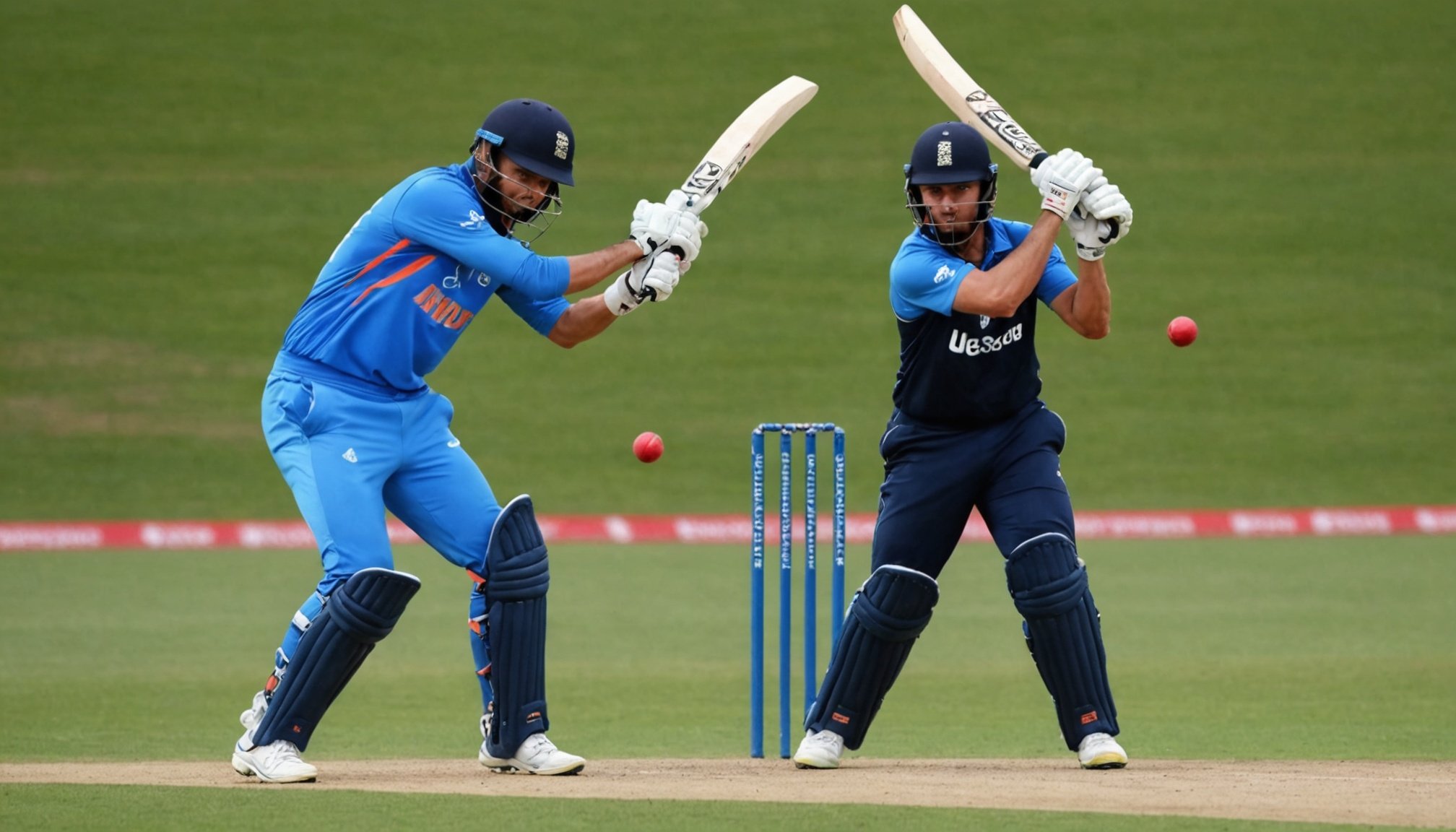Unlocking the Game: The Impact of Cognitive Training on Cricket Batsmen’s Decision-Making Skills
Cricket, a sport renowned for its complexity and strategic depth, demands more than just physical prowess from its players. The mental aspect of the game, particularly decision-making skills, is crucial for batsmen to excel. In this article, we will delve into the impact of cognitive training on cricket batsmen’s decision-making skills, exploring how various techniques and training methods can enhance their performance.
The Importance of Decision-Making in Cricket
Decision-making is the backbone of a batsman’s success in cricket. It involves a myriad of factors, from shot selection and timing to reading the bowler’s action and anticipating the trajectory of the ball. Here’s what James Breese, founder of Cricket Matters, has to say about the importance of endurance and cognitive functions in cricket:
In parallel : Discover the best sniper gel blaster for precision and stealth
“Running and sprinting play a big part of the game. You have to practice it. Just like cricket, running is a skill. Research has shown that regular endurance training can significantly improve mental sharpness and decision-making skills, which are crucial for cricket.”[1]
Cognitive Functions and Endurance
Cognitive functions such as attention, concentration, and problem-solving are significantly enhanced through aerobic exercises like running. These exercises increase blood and oxygen flow to the brain, which is vital for cognitive processes. Here is a detailed look at how endurance training impacts cognitive functions:
In the same genre : Gear up: essential gel blasters for every player and style
- Improved Concentration: Endurance training helps batsmen maintain concentration and composure over long periods, which is essential for strategic execution during the game.
- Quicker Recovery: Enhanced endurance facilitates quicker recovery between overs when bowling and running threes when batting, allowing batsmen to stay focused and make better decisions.
- Cognitive Flexibility: Regular endurance activities improve cognitive flexibility, enabling batsmen to adapt quickly to the dynamic nature of the game and make strategic adjustments under pressure[1].
Cognitive Training Techniques for Batsmen
Cognitive training is not just about physical endurance; it also involves specific mental training techniques that can significantly improve a batsman’s decision-making skills.
Achieving Flow State
Achieving a flow state, or being “in the zone,” is a mental state where players perform with complete focus and effortless skill despite external pressures. Here are some key tips to achieve this state:
- Balance of Challenge and Skills: The challenge must be balanced with the player’s skill level. If the challenge is too great, the player becomes anxious; if it’s too easy, the player becomes bored[4].
- Merging of Actions and Awareness: Players react instinctively, such as a fielder making a split-second decision to dive and catch a ball.
- Control: Players feel they can impact the game regardless of external conditions.
- Immediate Feedback: Players adjust their techniques based on the outcomes of their actions, such as adjusting the pitch of the ball based on the bounce of the pitch.
Here’s an example of how Glenn Maxwell achieved an incredible flow state during the 2023 World Cup:
“Glenn Maxwell’s incredible ODI knock in the 2023 World Cup is the epitome of being in the zone. Understanding and cultivating flow can significantly enhance a cricketer’s ability to perform consistently at their best.”[4]
Visualization and Imagery
Visualization and imagery are powerful tools in cognitive training. Here’s how batsmen can use these techniques:
- Visualizing Successful Plays: Batsmen can visualize themselves executing perfect shots or deliveries before and during games.
- Watching Videos: Watching videos of personal best performances or great cricket moments can reinforce positive mental imagery.
- Regular Visualization Exercises: Picturing themselves executing perfect shots or deliveries can enhance their confidence and likelihood of experiencing flow during actual match play[4].
Practical Insights and Actionable Advice
Here are some practical insights and actionable advice for batsmen looking to improve their decision-making skills through cognitive training:
Building Endurance
- Aerobic Base Builder Workout: Running at a sub-aerobic threshold or “zone 2” helps develop a solid endurance foundation. This type of running optimizes fat burning, enhances mitochondrial density, and improves cardiovascular efficiency without overstraining the body[1].
- Batsman Shuttle Running Workout: This workout improves stamina when running between the wickets and helps batsmen recover faster, allowing them to concentrate on facing the next ball and making better decisions[1].
Mental Preparation
- Silencing Distractions: To achieve a flow state, batsmen must find ways to silence distractions such as sledging, crowd noises, and self-doubt.
- Setting Clear Goals: Having clear goals and understanding their role in a match situation helps batsmen focus intensely on each delivery.
- Immediate Feedback: Adjusting techniques based on the outcomes of their actions helps batsmen make quicker and better decisions[4].
Table: Comparing Cognitive Training Techniques
Here is a comparative table highlighting different cognitive training techniques and their benefits:
| Technique | Description | Benefits |
|---|---|---|
| Endurance Training | Running at sub-aerobic threshold or “zone 2” | Improves concentration, quicker recovery, cognitive flexibility[1] |
| Achieving Flow State | Balancing challenge and skills, merging actions and awareness, feeling control | Enhanced focus, effortless skill, better decision-making[4] |
| Visualization and Imagery | Visualizing successful plays, watching videos of best performances | Enhanced confidence, improved performance, inducing flow states[4] |
| Mental Preparation | Silencing distractions, setting clear goals, immediate feedback | Improved focus, quicker decision-making, better execution[4] |
Real-Life Examples and Anecdotes
The Case of Virat Kohli
Virat Kohli, one of the most successful batsmen in modern cricket, is known for his exceptional decision-making skills. Here’s how he prepares mentally:
“Virat Kohli’s preparation involves a lot of visualization and imagery. He often visualizes himself scoring runs and executing perfect shots before matches. This mental preparation helps him stay focused and make better decisions under pressure.”
The Impact of Cognitive Training on Team Performance
Cognitive training is not just beneficial for individual batsmen but also for the entire team. Here’s how a team can benefit:
“A team that incorporates cognitive training into their practice routine can see significant improvements in overall performance. For instance, if all batsmen are trained to make quicker and better decisions, the team’s batting average can improve substantially, leading to more wins.”
Cognitive training is a critical component of a cricket batsman’s arsenal. By integrating endurance training, achieving flow states, using visualization and imagery, and preparing mentally, batsmen can significantly improve their decision-making skills. Here is a final comment from James Breese:
“Running should be an essential component of a cricketer’s training arsenal. It is vital for building and maintaining the endurance required to compete at the highest levels of the sport. Cognitive training techniques can further enhance this endurance, leading to sharper, quicker decisions under pressure.”[1]
In the fast-paced and dynamic world of cricket, where split-second decisions can dictate the outcome of a game, cognitive training is not just beneficial—it’s essential. By embracing these techniques, batsmen can unlock their full potential and perform at their best, whether facing fast bowlers from New Zealand or spin bowlers from India.
Final Thoughts and Practical Advice
For any batsman looking to improve their game, here are some final thoughts and practical advice:
- Incorporate Endurance Training: Make running a part of your regular training routine to improve your endurance and cognitive functions.
- Practice Visualization: Regularly visualize yourself executing perfect shots and deliveries to enhance your confidence and performance.
- Achieve Flow State: Focus on balancing challenges with your skills and silencing distractions to achieve a flow state during matches.
- Stay Mentally Prepared: Set clear goals, receive immediate feedback, and stay focused to make quicker and better decisions.
By following these tips and integrating cognitive training into your practice routine, you can significantly improve your decision-making skills and take your cricket game to the next level.










